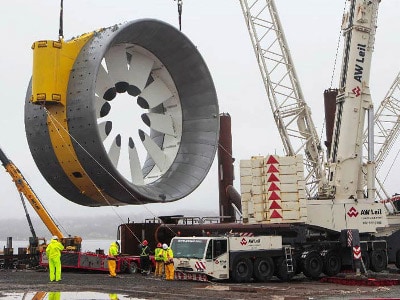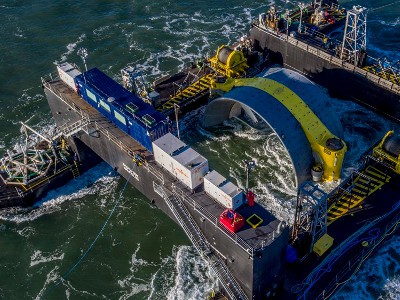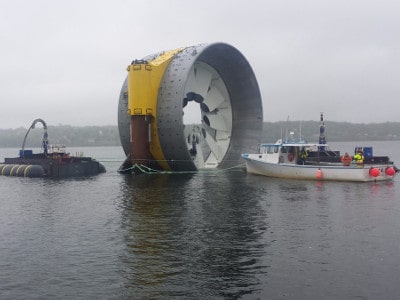Nova Scotia ranked fourth in tidal energy, behind South Korea, France and the U.K.

 The National Energy Board of Canada has ranked leaders in tidal energy capacity by country, citing Ocean Energy Systems’ 2015 Annual Report, placing South Korea far in the lead at 511MW, followed by France at 246MW and the U.K. at 139MW.
The National Energy Board of Canada has ranked leaders in tidal energy capacity by country, citing Ocean Energy Systems’ 2015 Annual Report, placing South Korea far in the lead at 511MW, followed by France at 246MW and the U.K. at 139MW.
Canada’s 40MW capacity ranks it fourth, ahead of Belgium at 20MW, China at 12MW, and Sweden at nearly 11MW.
The projects are made up of a combination of already installed and merely consented, some of which are still in their demonstration phase, while others are short-duration testing programs, and several more are prototypes just entering their commercialization phase.
South Korea makes some sense as a tidal energy leader, given that it’s already so highly technologically advanced in other ways, not to mention that it’s a small peninsula surrounded by water, with not far for electricity generated to travel to reach large urban centres.
Looking at the NEB’s chart is only deceptive in the sense that when they say “Canada” is ranked fourth in the world in terms of tidal energy, what they actually should have written is “Nova Scotia”.
All of Canada’s tidal energy capacity is located in Nova Scotia, with the Annapolis Tidal Power Plant generating 20MW and the remainder supplied by Fundy Ocean Research Centre for Energy (FORCE) test site projects developed by Minas Tidal, Black Rock Tidal Power, Atlantis Operations Canada, and Cape Sharp Tidal Venture.
The Bay of Fundy is obviously one of the best potential sites in North America for tidal power generation, and has been recognized as such by the California-based Electric Power Research Institute (EPRI).
Tides in the Bay of Fundy push more than 160 billion tonnes of water twice a day, more than four times the combined flow of every freshwater river in the world.
EPRI has estimated that the Minas Passage alone can generate nearly 300MW, which would be enough to power 100,000 homes.
Earlier this summer, two five-storey, two-megawatt turbines designed by Cape Sharp Tidal, a partnership between OpenHydro and Emera, and built by Aecon Atlantic Industrial Inc. in Pictou, Nova Scotia, were set to be installed at the Fundy Ocean Research Centre for Energy (FORCE) site, west of Parsborro.
Those 16-metre, 1,000 tonne turbines alone are capable of generating enough electricity to power 1,000 homes.
Research from Acadia University suggests that there is potentially more than 7,000MW of capacity that could be generated from the Minas Passage, 2,500MW of which can be commercially harnessed without significantly impacting the marine environment.
Nova Scotia Energy Minister Michael Samson has said that renewable energy technology is estimated to be worth up to $1.7 billion to the province’s economy.
Nova Scotia Power recently announced its intention to have 47% of its energy needs provided by non-fossil fuel sources by 2020, contingent on the Maritime Link project coming online in 2017.
Power supplied by renewables in Nova Scotia reached 26.6% in 2015, up from 22% in 2014 and 9% in 2007.
“Coming out of the Paris climate accord, it’s clear that we’re moving globally toward a lower carbon future,” said Vice President of Power Generation and Delivery for Nova Scotia Power Mark Sidebottom. “Guided by provincial legislation that enables made-in-Nova Scotia solutions, we’re making great progress on reducing emissions and adding renewable energy in a manner that’s affordable for Nova Scotia families and businesses.”

Terry Dawes
Writer


